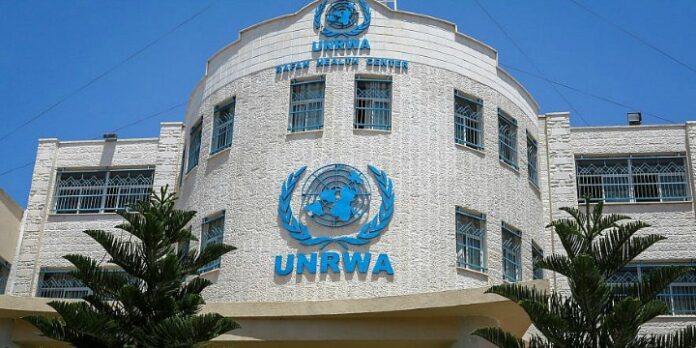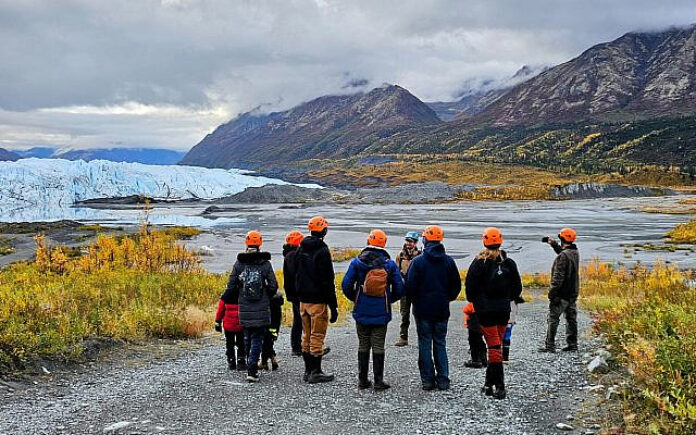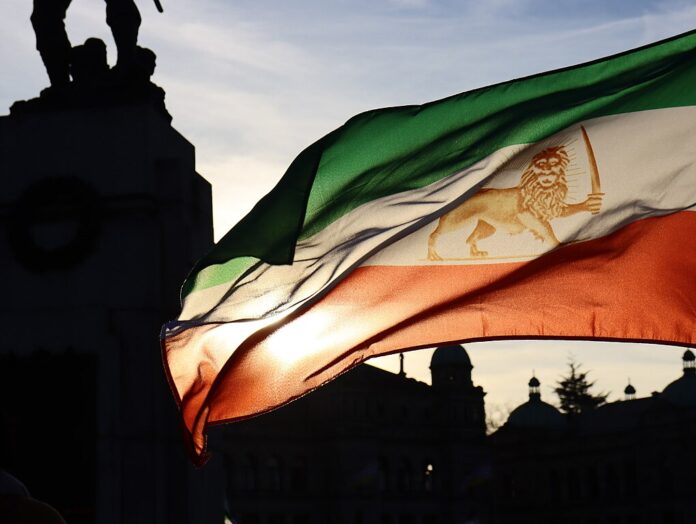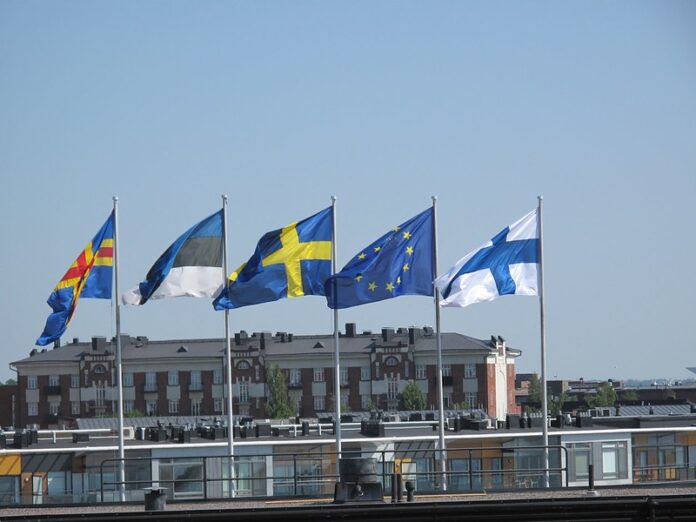Shany Mor’s essay identifies four “concepts” that he believes blinded us to the approaching disaster of October 7. The first is what he sees as Benjamin Netanyahu’s tendency to inertia, the second is the political project of religious settlers, the third is the lingering effect of the “peace process,” and the last the warped structure of political sovereignty in Gaza by which outside powers take financial responsibility for the well-being of the population, freeing the actual rulers to concentrate on terrorism.
Of the four, the third, which points to the faulty logic of the so called “peace process,” is, I think, most convincing—which is why the second, blaming religious settlers, is the least so. Many Israelis feel October 7 vindicated the settlers: had we not evacuated the Gaza Strip in 2005 none of this would have ever come about. That’s a hard point to dispute.
That said, Mor’s insight into the lingering effects of the defunct peace process is profound. Not the process itself, but the frame of mind that animated it, continues to inform Israeli, American, and European actions—political, administrative, and military—in unexpected ways; it even informs the actions of the peace process’s opponents.
This is because the peace process isn’t an opinion on a single issue, but a conceptual framework rooted in a particular worldview. Perhaps this worldview can best be understood if we look at the misconceptions it created as a kind of Russian matryoshka doll, in which each doll is contained in a larger one; that is, each idea is imbedded in, and informed by, a more general idea at a higher level of abstraction.
With this in mind, we can classify the misconceptions that led to the disaster from the inside out: the technological-defensive strategy at the military level; the two-state paradigm behind the Oslo process and the Gaza disengagement at the political level; the ideological view of international relations as interplay between independent nation-states pursuing rational self-interest; and finally, a distinctly Western philosophical conception of human nature, which underpins the others.
Israel’s right-wing coalition, in power for many years now, is actually more immune than the opposition to most of these conceptions. Nonetheless, the conceptions were powerful enough to have a decisive effect—less because Netanyahu and his government shared this or that fragment of any particular conception, and more because the conceptual framework was so pervasive, on all levels, that it imposed external constraints on the government which were powerful enough to prevent radical policy departures.
Above all there was never a time when the Netanyahu government could have initiated a full-scale war in Gaza, which even now enjoys too little international legitimacy, and no little domestic criticism. Still, because October 7 happened on Netanyahu’s long watch, he bears a share of the responsibility, despite having spent most of his career trying to fight many of these misconceptions. I shall return to his role at the conclusion of this essay.
But first a word of caution is in order. Reality is frustratingly messy. Not all failed conceptions die from the force of one blow. More often they crumble slowly, losing their hold on some people first and then on others. October 7 swept away an already dilapidated edifice of beliefs. And when there isn’t just one erroneous conception but numerous, concentric errors, they don’t all vanish at once, or in any predictable order.
Even if October 7 has doomed this body of ideas to political irrelevance, it can still run about headless—or even run for office. Remember: it took four years after the end of the Yom Kippur War for the political sea-change of 1977, when Menachem Begin’s Likud won power for the first time. Likewise, the political results of October 7 may still remain far off, and we can only conjecture what they will be.
With that in mind let’s look at the concepts.
I. Defensive Posture
At the lowest tactical level, the smallest, innermost doll, Israel assumed a defensive, rather than offensive military posture reliant on technological superiority.
Like the rest of the West, Israel believed that its technological advantage was a sufficient deterrent. A “small, smart army,” as the now-infamous phrase had it, would therefore suffice, because, the logic went, technology had made large ground wars obsolete. In the last two decades Israel repeatedly cut the size of its armored divisions and other ground forces. It relied instead on a large and robust air force, special operations, sophisticated rocket and projectile interceptors, cyber intelligence, and a technologically sophisticated border fence.
Taken together, these do not constitute an effective force in a full-scale multi-front ground war. Relying on them exclusively was a reckless gamble. And having taken that gamble, Israel fell into complacency behind the slurry wall on the Gaza border, under an iron dome.
This strategy was mistaken on almost every level. First, our enemies were not deterred by our superior technology. They adapted to it and used low tech to subvert it: Yahya Sinwar knew Israel could penetrate cell phones, so he communicated with handwritten notes. He knew Israel was over-reliant on border-fence censors and found a way to blind them using cheap commercial drones. He knew that the border wall was almost impossible to dig under, so he used bulldozers to breach the fence above it, and paragliders to fly over the fence. He did not have tanks, but a fast Toyota pickup truck can carry RPGs. As Michael Doran and Can Kasapoglu have explained, Israel was ready for Star Wars, and Hamas gave it Mad Max: a hybrid low-tech battlefield for which it was ill prepared.
Hamas and its Iranian mentors also understood the fatal flaw of purely defensive strategies: defenders inevitably fall into routines. The attackers will study these routines and use the advantages of initiative and surprise against them.
Above all, defense cannot win wars. We assumed, however, that we could simply avoid them. Under the shadow of a protective technological umbrella, we progressively lost sight of the very idea of military victory.
II. The “Two-State Solution”
The high-tech Gaza border wall is the physical manifestation of the policy of unilateral partition. But that was not Israel’s first choice. Partition was once contained in a larger conception: a peace agreement that would offer a territorial solution to the Israel-Palestinian conflict. According to this paradigm, negotiations would establish an agreed-upon border between two nation-states, tired of wars and determined to move toward cooperative coexistence.
But peace was not forthcoming, as most Israelis came to understand in 2000, when then-prime minister Ehud Barak offered Yasir Arafat all the Israeli public could stomach and then some, only to be turned down and rewarded with the second intifada. So Israelis chose unilateralism and imposed in Gaza the partition they had hoped to negotiate at Camp David 2000. Independence, or something close to it, was thus forced on Gaza.
In this way the basic logic of the Oslo process survived its collapse and informed the disengagement from Gaza. The seduction of unilateral partition is obvious: like a peace accord, it combined self-interest with moral duty. If implemented in both Gaza and the West Bank, as originally planned, it would solve Israel’s demographic problems and ensure a Jewish majority in Israel proper, release Israel from administering a large Palestinian population, and relieve it of the moral burden of military rule over a civilian, non-citizen population. In other words, it would do much of what peace could have done, without the Palestinians able to veto it.
But unilateral partition was never a goal in itself. It was a stop-gap measure on the way to eventual peace. It was a trial-run for Palestinian statehood, based on the hope that the Palestinians would come around and realize, after tasting political independence and economic opportunities, the folly of endless war.
The trial failed almost immediately. Rockets kept raining on Israel’s southern towns after disengagement; Hamas won the election in 2006 and then, in 2007, violently eliminated the PLO in the Strip. It established a terror quasi-state, which Mor rightly describes as a constitutional anomaly where Hamas devotes its resources to building terror infrastructure, making the population’s day-to-day needs someone else’s problem. A regular, unending influx of international aid would render economic development unnecessary.
Much is now made of the money from Qatar that Israel allowed to flow into Gaza in the form of suitcases of cash. Supposedly this was Netanyahu’s great mistake that enabled Hamas to grow into the monster that it had become in 2023. In reality the money from Qatar was just a drop in a sea of financial aid offered by the international community in many guises, not least through the terror-supporting UN Relief and Works Agency for Palestine Refugees (UNRWA).
The truth is that after disengagement Israel had little room to maneuver. Since public opinion within Israel and outside it offered not a shred of legitimacy for a full-scale invasion of Gaza to topple Hamas, nor for a full-scale siege, Israel could only do its best to treat civilian administration separately from military challenges. This made for an unstable, uneasy dynamic: aid flowed in because Israeli intelligence believed a higher standard of living would help pacify the Strip, while rockets were periodically answered with a round of limited military action, mostly from the air. These were the carrots and the sticks by which the conflict was managed.
The entire intelligence brass believed the strategy was working. If one were to pinpoint a single glaring misconception, a Yom Kippur War-magnitude intelligence failure, this was it: the belief that we had a reliable understanding of Hamas’s incentives, and that we were manipulating them successfully. So convinced was the leadership of the military and other security services in its analysis that even when the signs of an imminent attack were multiplying on the fateful night between October 6 and 7, it never thought it necessary to wake up the minister of defense or the prime minister.
In a most glaring example of this groupthink, only two months before the October 7 massacre, reserve Major General Tamir Hayman, the former head of IDF intelligence and current director-general of the prestigious Institute for National Security Studies think-tank, said publicly that we are not on the eve of a war. One does not need to survey the intelligence to know this, he argued; it is enough to understand the interests involved. That is as pure a case as one can imagine of the danger preconceptions pose to intelligence work: they rule out consideration of new data. The IDF had the October 7 Hamas plan in its hands. There was a power-point presentation about it, prepared by lower-level officers, titled the Wall of Jericho. Their superiors dismissed it as fanciful.
III. Peace Among Sovereign Nation-States
Unilateral partition was born out of the collapse of the Oslo Accords. But both were anchored in the same misconception of the Palestinian national movement. We imagined it in the image of ours. We assumed that national self-determination was its goal and that Palestinians would seize the opportunity to assume political independence so they could build their political and economic future.
But nation-building was never on their agenda. We would have understood this if we had studied their political culture seriously, instead of assuming they share ours. The nation-state is not a stable political structure in the Arab world, and national identities such as “Syrian” or “Jordanian” are weak. The Arab Spring and the internecine conflicts it unleashed made this abundantly clear.
In retrospect it was folly to imagine that of all Arab peoples, the Palestinians would prove the exception that would produce a stable nation-state. That was never the goal of Palestinian leaders and political factions from the mufti of Jerusalem onwards. As Mor himself has put it, “the principal grievance of the Palestinian cause . . . is not the absence of a desired nation-state but the existence of another one.” And every decision made in the service of that cause, from the rejection of partition in 1947 to the insistence on an unprecedented “right of return,” supports that fact. The so called “right of return” which is at the center of the Palestinian national ethos, is just a euphemism for the demographic destruction of the Jewish state.
IV. Homo Economicus
But misunderstanding runs deeper. It is not only that we imagined the Palestinian national movement in the image of ours. We also projected our own misconceptions of human nature onto the Palestinians. We misunderstood them, in other words, in the same way that we misunderstand ourselves.
Contemporary Western elites mostly assume as a matter of course that we all want, above all, a decent job, food on the table, and a safe environment to raise our children. But when we conceive of all life in these materialistic terms, we lose the ability to imagine the human capacity for the sublime and the evil alike. And, encouraged by fuzzy-headed liberal and socialist assumptions from America, Europe, and the global NGO industry, Israelis failed to believe in their neighbors’ sinister intentions.
When, one after the other, IDF intelligence chiefs reassured us that the Palestinians are deterred because it was not in their interest to risk the economic gains we helped them achieve, it is because they project our ideas of human motivation onto them. So self-evident do their presuppositions seem that they become invisible to those who hold them.
These presuppositions serve as filters by which any contradictory information is labeled as pessimism, fear-mongering, fantasy, absurdity, or deception—and so never enters intelligence calculations. The same projections and misunderstandings predominate departments of Middle East studies throughout the West.
It was on the basis of these Western conceptions of human nature that we assumed our technology would be intimidating enough; it was this view that informed our belief that, once freed from Israeli occupation, Gazans would naturally devote their efforts to nation-building and economic betterment; it is on the basis of this outlook that we also convinced ourselves that they’ll see that perpetual peace was better than perpetual war.
And this is why we did not take seriously their theology of hate, their deep-seated racism, and the depth of their barbaric sadism.
We did not take ourselvesseriously either, and so we did not understand the forces within ourselves that were now awakened.
In his masterful essay “Churchill in 1940,” Isaiah Berlin wrote that Winston Churchill did not create the fortitude that the British people displayed in their determination to fight the evil of Nazism. He only awakened something that was already in them, but that they themselves had forgotten. In a less poetic way, but with no less ferocity, Benjamin Netanyahu tapped a force within the hearts of Israeli Jews that most of us no longer remember we possessed. He did it simply and straightforwardly: he insisted on total victory from day one, and has never wavered since.
Unlike Churchill who commandeered the whole of British society, Netanyahu has had to manage the war despite opposition from much of the state and military bureaucracy, fickle coalition partners, a hostile press, and an elite that loathes him. That elite includes much of the top brass of the IDF and Shin Bet, who have more than once tried to undermine him. Instead of the unwavering support Britain received from the Roosevelt administration even before Pearl Harbor, the current U.S. government has repeatedly tried to bring about the end of Netanyahu’s term as well as an end to the war without Israeli victory. It is also undermining Israel’s long-term security with its strategy of appeasing Tehran. Notwithstanding all this, Netanyahu has persisted on the path to victory and now Israel seems close to achieving it, perhaps even to removing the Iranian nuclear threat. That’s a breathtaking feat of statesmanship by any standard—one that most of us, myself included, did not believe was possible at all.
All the same, October 7 did happen on Netanyahu’s watch. The question of his responsibility awaits inquiry when this war is over. What he did and did not do before that day will have to be weighed against what he did since.
But the truth is that Israelis care very little about that now, which is why the attempts to pin responsibility for the disaster on the prime minister have failed to gain traction. After a string of extraordinary operational successes in the conduct of the war, and after resisting external pressure to buckle in the face of Israel’s enemies, Netanyahu is steadily rising in the polls. That’s because a solid majority in Israel understands the existential danger we are in, and so does not dream of replacing the one man who has never wavered on “total victory.”



















